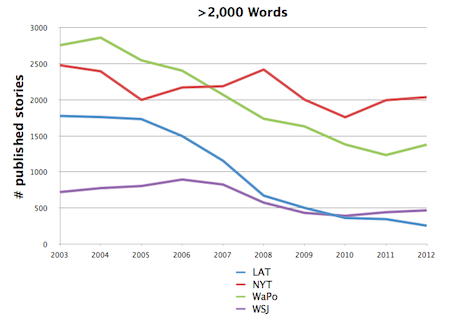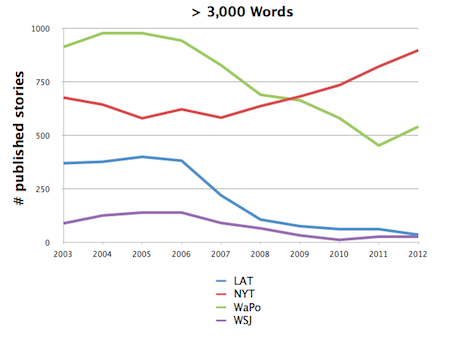Three of the world’s largest newspapers published significantly fewer longform stories in the last year, according to Dean Starkman at CJR. The L.A. Times, for example, ran 256 stories longer than 2,000 words last year. In 2003, they published 1,776. It’s an 86 percent drop. Starkman got similar numbers for The Washington Post and The Wall Street Journal. The papers experienced even larger drops for stories longer than 3,000 words.
Starkman notes that papers are generally publishing fewer stories, period. This suggests that the decline in longform stories in prominent American newspapers may just be reiterating what we already know: newspapers are having a hard time.
But if print can’t sustain the bulk of longform articles, the web has proven that it can. In fact, Poynter pointed out sometime ago that print is actually adapting to how the web handles longform journalism. No doubt that the web breeds versatility, but these findings both suggest that the content and the form are not in trouble, but the print medium is.











